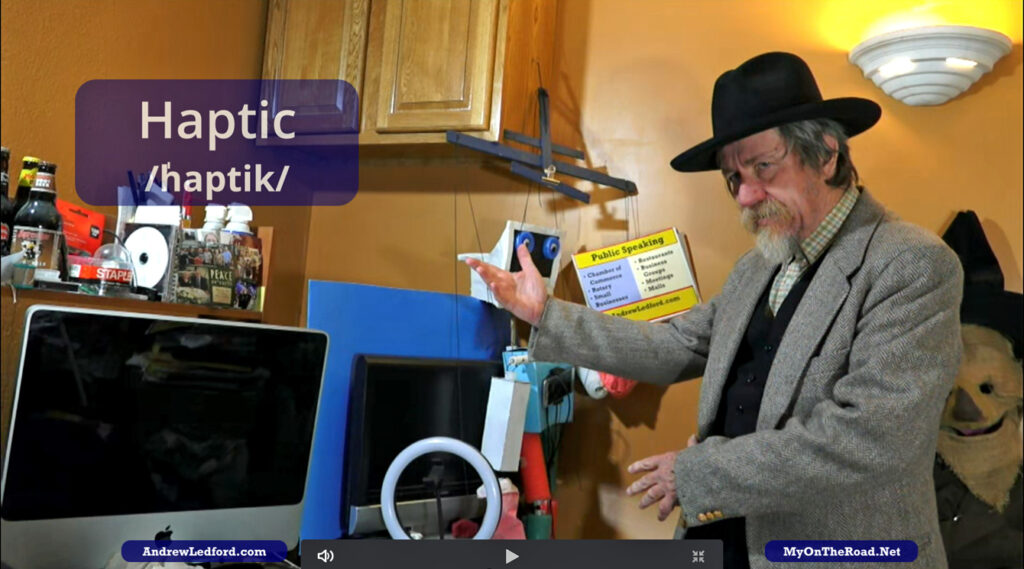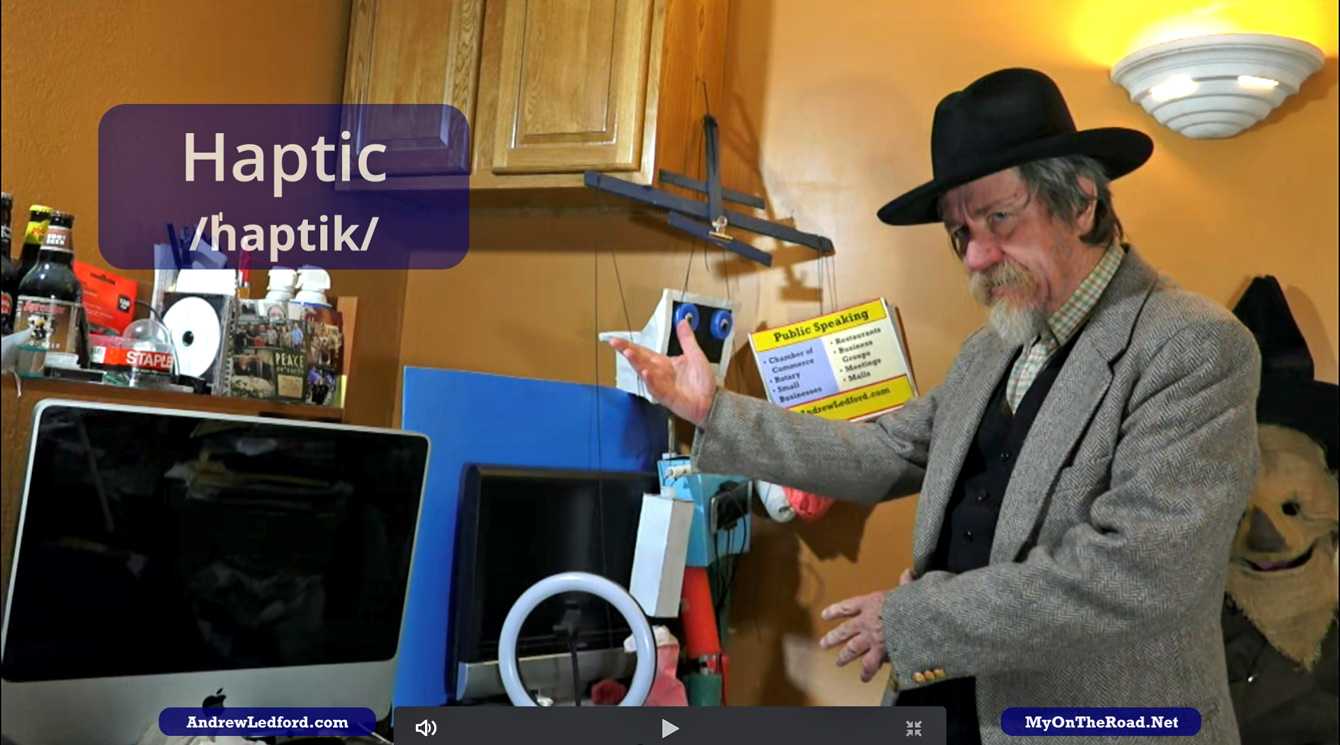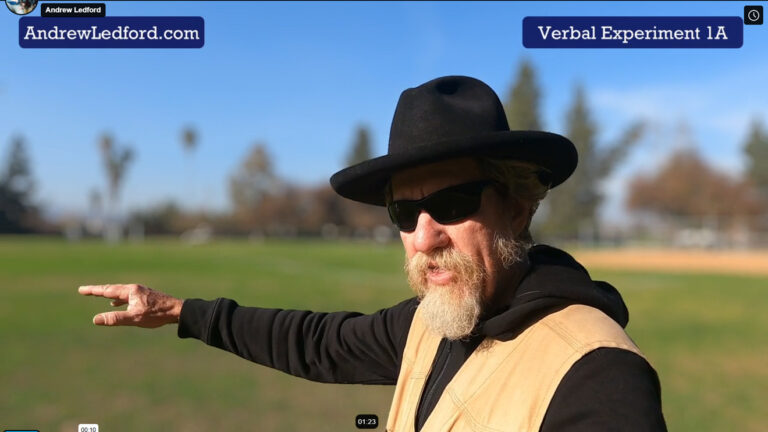Haptic Vocabulary Word For The Day
Haptic refers to touch.
There are two types of touching sensations that can be experienced as haptic. They are tactile and Kinesthetic
One is tactile. Tactile sensations detect pressure or force on the skin’s surface. We experience this type of haptic sensation as touch. We can use our haptic perception of touch to determine many properties of our environment such as size, weight, contour, surface and material characteristics, consistency and temperature.
All of these elements are vitally important for normal life skills. They are fine tuned for many specialty skills, work related skills, and recreational activities.
The next area of haptic experiences we need to consider are all the sensations of body movement and our muscular system. Kinesthetic perception is how we sense how our body moves.
Kinesthetic perception controls our body movements including how we speak. Anytime you learn a new psychomotor skill you need to use some kind of kinesthetic perception. It is interesting to note that developing highly skilled body movements also increases the synaptic connections in the brain. So it is also involved in brain plasticity.

Kinesthetic perception relies on proprioceptors as a means of giving us the sense of self-movement, force, and body position. The proprioceptors interact with the central nervous system where they are integrated with other sensory systems to create a gestalt of body position, movement, and acceleration.






